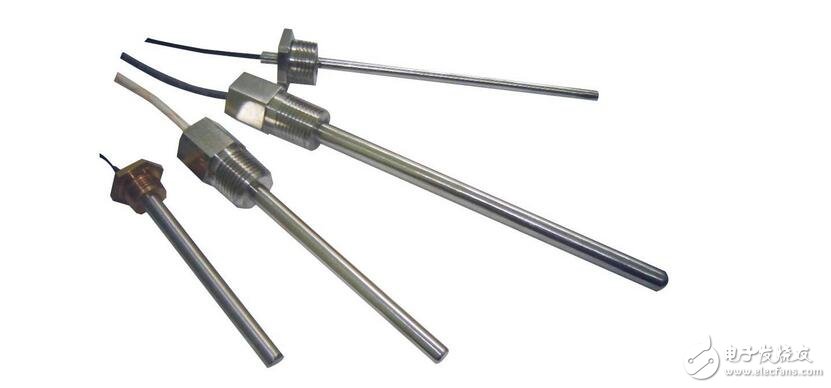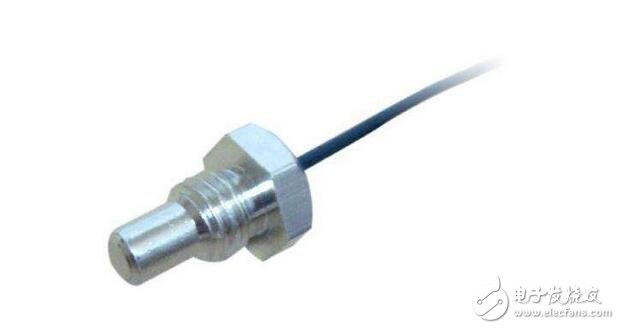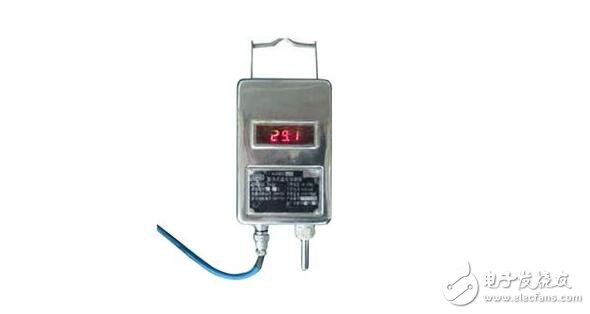Company Details
Company Details
![]() January 10, 2022
January 10, 2022
A temperature transducer is a sensor that senses temperature and converts it into an available output signal. The Temperature Sensor is the core part of the temperature measuring instrument and has a wide variety. After entering the 21st century, temperature sensors are rapidly developing in the direction of high-tech, multi-function, bus standardization, high reliability and safety, development of virtual sensors and network sensors, and development of single-chip Temperature Measurement systems. The bus technology of the Temperature sensor is also standardized and can be used as a slave to communicate with the host via a dedicated bus interface. According to the measurement method, it can be divided into two types: contact type and non-contact type. According to the characteristics of sensor materials and electronic components, it can be divided into two types: thermal resistance and thermocouple.

There are four main types of temperature sensors: thermocouples, thermistors, resistance temperature detectors (RTDs), and IC temperature sensors. The IC temperature sensor includes two types of analog output and digital output.
1, the working principle of thermocouple
When there are two different conductors and the semiconductors A and B form a loop, when the two ends are connected to each other, as long as the temperature at the two junctions is different, the temperature at one end is T, which is called the working end or the hot end, and the temperature at the other end is TO. , called the free end (also called the reference end) or the cold end, there is current in the loop, that is, the electromotive force existing in the loop is called the thermoelectromotive force. This phenomenon of generating an electromotive force due to a difference in temperature is called a Seebeck effect. There are two effects associated with Seebeck: first, when there is a current flowing through the junction of two different conductors, the heat is absorbed or released here (depending on the direction of the current), called the Peltier effect; Second, when a current flows through a conductor with a temperature gradient, the conductor absorbs or releases heat (depending on the direction of the current relative to the temperature gradient), known as the Thomson effect. A combination of two different conductors or semiconductors is called a thermocouple. The thermoelectric potential EAB(T, T0) of the thermocouple is synthesized from the contact potential and the thermoelectric potential. Contact potential refers to the potential generated by two different conductors or semiconductors at the contact, which is related to the nature of the two conductors or semiconductors and the temperature at the point of contact.
The thermoelectric potential refers to the potential generated by the same conductor or semiconductor at different temperatures. This potential is only related to the nature of the conductor or semiconductor and the temperature at both ends, and is independent of the length of the conductor, the size of the section, and the temperature distribution along its length. . Whether the contact potential or the thermoelectric potential is due to the difference in the number of electrons concentrated at the end of the contact, the thermoelectric potential measured by the thermocouple is a combination of the two. When the loop is open, there is an electromotive force difference ΔV between the breaks a and b, the polarity and magnitude of which coincide with the thermoelectric potential in the loop. It is also stated that at the cold end, when the current flows from A to B, A is said to be the positive electrode and B is the negative electrode. Experiments show that when ΔV is small, ΔV is proportional to ΔT. The differential thermoelectric potential of ΔV to ΔT is defined as the thermoelectric potential rate, also known as the Seebeck coefficient. The sign and size of the Seebeck coefficient depends on the thermoelectric characteristics of the two conductors that make up the thermocouple and the temperature difference of the junction.
Currently, the International Electrotechnical Commission (IEC) recommends eight types of thermocouples as standardized thermocouples, namely T-type, E-type, J-type, K-type, N-type, B-type, R-type and S-type.

2, the working principle of the thermal resistance
The resistance value of the conductor changes with temperature. The temperature of the measured object is calculated by measuring the resistance value. The sensor constructed by this principle is the resistance temperature sensor, which is mainly used for the temperature range of -200-500 °C. measuring. Pure metal is the main manufacturing material of the thermal resistance. The material of the thermal resistance should have the following characteristics: 1 The temperature coefficient of resistance should be large and stable, and there should be a good linear relationship between the resistance value and the temperature.
2 high resistivity, small heat capacity and fast reaction speed.
3 The material has good reproducibility and manufacturability, and the price is low.
4 The chemical and physical properties are stable within the temperature range.
At present, the most widely used platinum and copper in the industry, and has been made into a standard temperature measuring thermal resistance

3, infrared temperature sensor
In nature, when the temperature of an object is higher than absolute zero, due to the internal thermal motion, it will continuously radiate electromagnetic waves to the surroundings, including infrared rays with a wavelength of 0.75-100 μm. The infrared temperature sensor uses this The principle is made.
SMTIR9901/02 is a widely used infrared sensor on the market by Smartec Company of the Netherlands. It is a silicon-based infrared sensor based on thermopile. A large number of thermocouples are stacked on the underlying silicon substrate. The high temperature contacts and low temperature contacts on the bottom layer are separated by a very thin film. The black absorption layer above the high temperature contacts converts the incident radiation into thermal energy. It can be seen that the output voltage is proportional to the radiation. Usually, the thermopile uses BiSb and NiCr as thermocouples. In addition, the SMT9902sil is internally embedded with a Ni1000 temperature sensor and a small viewing angle silicon filter to make the measurement temperature more accurate. Because infrared radiation characteristics are temperature dependent, different filters can be used to measure different temperature ranges. The mature semiconductor process is miniaturization and low cost. To meet certain applications, the infrared sensor opening angle of view can be designed to be as small as 7°.

4, analog temperature sensor
Common analog temperature sensors are LM3911, LM335, LM45, AD22103 voltage output type, and AD590 current output type.
The AD590 is a current output type temperature sensor from Analog Devices, Inc., with a supply voltage range of 3 to 30V, an output current of 223μA (-50°C) to 423μA (+150°C), and a sensitivity of 1μA/°C. When the sampling resistor R is connected in series in the circuit, the voltage across R can be used as the output voltage. Note that the resistance of R cannot be made too large to ensure that the voltage across AD590 is not less than 3V. The AD590 output current signal transmission distance can reach more than 1km. As a high-impedance current source, up to 20MΩ, it does not have to consider the error caused by the additional resistor introduced by the selection switch or CMOS multiplexer. Suitable for control of multi-point temperature measurement and long-distance temperature measurement.
5, logic output type temperature sensor
Set a temperature range. When the temperature exceeds the specified range, an alarm signal is sent to turn the fan, Air conditioner, heater or other control device on or off. In this case, a logic output temperature sensor can be selected. The LM56, MAX6501-MAX6504, and MAX6509/6510 are typical representatives.
The LM56 is a high-precision low-voltage temperature switch manufactured by NS, with a built-in 1.25V reference voltage output. The maximum load is only 50μA. The power supply voltage is from 2.7 to 10V, the operating current is up to 230μA, the sensitivity of the built-in sensor is 6.2mV/°C, and the sensor output voltage is 6.2mV/°C&TImes; T+395mV.
It uses a silicon process to produce a digital temperature sensor that uses a PTAT structure that has precise, temperature-dependent output characteristics. The output of PTAT is modulated into a digital signal by a duty cycle comparator. The relationship between duty cycle and temperature is as follows: DC=0.32+0.0047*t, t is Celsius. The output digital signal is compatible with the microprocessor MCU. The high-frequency sampling of the processor can calculate the duty cycle of the output voltage square wave signal to obtain the temperature. This temperature sensor has a resolution better than 0.005K due to its special process. Measuring temperatures range from -45 to 130 ° C, it is widely used in high precision applications.

In many engineering applications, we have found that the temperature sensor bushing in use will crack, which will affect the safety of the production machine, and in serious cases, accidents will occur. Through the investigation of the rupture of the sensor casing, and finding out the cause, we found that the causes of the rupture of the temperature sensor casing are mainly as follows:
(1) The temperature sensor bushing is impacted by high-speed fluid, the load is too large, and the stress exceeds the limit, causing the casing to rupture;
(2) The processing defects of the temperature sensor casing itself lead to stress concentration, which easily causes the casing to break;
(3) The pipe vibration is too large, causing fatigue damage of the temperature sensor casing;
(4) When the fluid flows through the temperature sensor casing, the temperature sensor casing vibration is induced, that is, the temperature of the temperature sensor casing natural frequency and the fluid vortex shedding frequency resonate. This resonance can cause the temperature sensor casing to be damaged faster, resulting in fracture.
In combination with the above several cases that easily lead to the rupture of the temperature sensor casing, we have conducted research together with the thermal control professional and metal specialty, and found that the rupture of the temperature sensor casing can be reduced by the following methods.
(1) Strictly control the insertion depth of the sensor sleeve. As the depth of insertion increases, the force applied to the protective sleeve increases squarely. Therefore, when we measure the temperature, we only need to insert the temperature sensor casing into the isothermal zone of the fluid without inserting it into the center point of the pipe, which is beneficial to shorten the length of the cantilever of the Temperature Gauge bag and reduce the amplitude of the end point. .
(2) Optimize the diameter of the temperature sensor casing while ensuring the necessary sensor casing strength. Because when the diameter of the temperature sensor casing increases, the force of the watch pocket increases linearly. Therefore, when selecting the diameter of the watch pocket, it is necessary to reasonably ensure the strength of the casing, and to stagger the resonance danger zone as much as possible.
(3) Change the cross-sectional shape and process the surface into a structural pattern so that the fluid does not cause vortex shedding.
(4) Strictly control the quality of maintenance, do a good job in the inspection of the material of the sensor casing, and at the same time do a good inspection of the flaw detection to prevent the occurrence of abnormal accidents such as cracks and breaks in the welding joint.
(5) When the system is put into operation, avoid the sudden opening of the valve on the pipeline. At the moment when the valve is opened, the temperature sensor bushing will be subjected to a large one-way force. Therefore, when the system is just put into operation, the valve should be slowly opened to gradually increase the system pressure, and the temperature sensor casing should be reduced as much as possible. The pressure difference between the front and the back prevents the casing from being broken due to excessive one-way force.
When any sensor is put into use, there will always be some unintended situations. We need to combine the theory with the actual situation and propose corresponding solutions to the specific situation.
The above is the The principle of various temperature sensors and the solution of the temperature sensor casing rupture we have listed for you. You can submit the following form to obtain more industry information we provide for you.
You can visit our website or contact us, and we will provide the latest consultation and solutions
Send Inquiry
Most Popular
lastest New
Send Inquiry